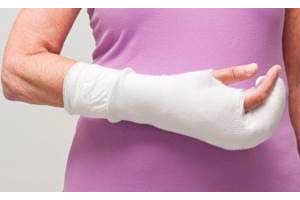- Home
- Editorial
- News
- Practice Guidelines
- Anesthesiology Guidelines
- Cancer Guidelines
- Cardiac Sciences Guidelines
- Critical Care Guidelines
- Dentistry Guidelines
- Dermatology Guidelines
- Diabetes and Endo Guidelines
- Diagnostics Guidelines
- ENT Guidelines
- Featured Practice Guidelines
- Gastroenterology Guidelines
- Geriatrics Guidelines
- Medicine Guidelines
- Nephrology Guidelines
- Neurosciences Guidelines
- Obs and Gynae Guidelines
- Ophthalmology Guidelines
- Orthopaedics Guidelines
- Paediatrics Guidelines
- Psychiatry Guidelines
- Pulmonology Guidelines
- Radiology Guidelines
- Surgery Guidelines
- Urology Guidelines
Odanacatib reduces fracture risk but increases risk of stroke: Lancet

USA: Odanacatib, a cathepsin K inhibitor, although reduces the risk of fracture but is associated with an increased risk of stroke in postmenopausal women with osteoporosis, according to a recent study in The Lancet Diabetes & Endocrinology. Weighing on the benefit and risk profile, the researchers no longer pursue the development of odanacatib for osteoporosis treatment.
Odanacatib is known to reduce bone resorption while maintaining bone formation. Previous work has shown that odanacatib increases bone mineral density (BMD) in postmenopausal women with low bone mass. Michael R McClung, Oregon Osteoporosis Center, Portland, OR, USA, and colleagues aimed to investigate the efficacy and safety of odanacatib to reduce fracture risk in postmenopausal women with osteoporosis in the Long-term Odanacatib Fracture Trial (LOFT) -- a multicentre, randomized, double-blind, placebo-controlled, event-driven study.
The study was conducted at 388 outpatient clinics in 40 countries. The eligible participants included 16 071 women aged at least 65 years who were postmenopausal for 5 years or more, with a femoral neck or total hip bone mineral density T-score between −2·5 and −4·0 if no previous radiographic vertebral fracture, or between −1·5 and −4·0 with a previous vertebral fracture. treatment: 8043 to odanacatib (50 mg once per week) and 8028 to placebo. Women with a previous hip fracture, more than one vertebral fracture, or a T-score of less than −4·0 at the total hip or femoral neck were not eligible unless they were unable or unwilling to use approved osteoporosis treatment. Participants were randomly assigned (1:1) to either oral odanacatib (50 mg once per week) or matching placebo. After a median follow-up of 36·5 months (IQR 34·43–40·15), 4297 women assigned to odanacatib and 3960 assigned to placebo enrolled in LOFT Extension (total median follow-up 47·6 months, IQR 35·45–60·06).
Primary endpoints -- incidence of vertebral fractures -- was assessed using radiographs collected at baseline, 6 and 12 months, yearly, and a final study visit in participants for whom evaluable radiograph images were available at baseline and at least one other time point, and hip and non-vertebral fractures adjudicated as being a result of osteoporosis as assessed by clinical history and radiograph.
Safety was assessed in participants who received at least one dose of study drug. The adjudicated cardiovascular safety endpoints were a composite of cardiovascular death, myocardial infarction, or stroke, and new-onset atrial fibrillation or flutter. Individual cardiovascular endpoints and death were also assessed.
Read Also: Regular Physical activity reduces fracture risk among elderly women
Key findings of the study include:
- In LOFT, cumulative incidence of primary outcomes for odanacatib versus placebo were: radiographic vertebral fractures 3·7% (251/6770) versus 7·8% (542/6910), hazard ratio (HR) 0·46; hip fractures 0·8% (65/8043) versus 1·6% (125/8028), non-vertebral fractures 5·1% (412/8043) versus 6·7% (541/8028).
- Combined results from LOFT plus LOFT Extension for cumulative incidence of primary outcomes for odanacatib versus placebo were: radiographic vertebral fractures 4·9% (341/6909) versus 9·6% (675/7011), HR 0·48; hip fractures 1·1% (86/8043) versus 2·0% (162/8028); non-vertebral fractures 6·4% (512/8043) versus 8·4% (675/8028).
- In LOFT, the composite cardiovascular endpoint of cardiovascular death, myocardial infarction, or stroke occurred in 273 (3·4%) of 8043 patients in the odanacatib group versus 245 (3·1%) of 8028 in the placebo group.
- New-onset atrial fibrillation or flutter occurred in 112 (1·4%) of 8043 patients in the odanacatib group versus 96 (1·2%) of 8028 in the placebo group.
- Odanacatib was associated with an increased risk of stroke (1·7% [136/8043] vs 1·3% [104/8028], HR 1·32), but not myocardial infarction (0·7% [60/8043] vs 0·9% [74/8028], HR 0·82).
- The HR for all-cause mortality was 1·13 (5·0% [401/8043] vs 4·4% [356/8028]).
- When data from LOFT Extension were included, the composite of cardiovascular death, myocardial infarction, or stroke occurred in significantly more patients in the odanacatib group than in the placebo group (401 [5·0%] of 8043 vs 343 [4·3%] of 8028, HR 1·17, as did stroke (2·3% [187/8043] vs 1·7% [137/8028], HR 1·37).
Read Also: FDA approves new drug for osteoporosis in women with high fracture risk
"Findings warrant further investigation to provide insights into overlapping disease pathways in bone and CV biology, which may help future development of both osteoporosis and CV disease therapies," concluded the authors.
The study, "Odanacatib for the treatment of postmenopausal osteoporosis: results of the LOFT multicentre, randomised, double-blind, placebo-controlled trial and LOFT Extension study," is published in the journal The Lancet Diabetes & Endocrinology.

Disclaimer: This site is primarily intended for healthcare professionals. Any content/information on this website does not replace the advice of medical and/or health professionals and should not be construed as medical/diagnostic advice/endorsement or prescription. Use of this site is subject to our terms of use, privacy policy, advertisement policy. © 2020 Minerva Medical Treatment Pvt Ltd